When Oscar Piastri decided to get new tires on lap 20 of 53 in the Japanese Grand Prix, Max Verstappen and Lando Norris responded just one lap later. Once in the pit lane, McLaren gained Norris over a second as Verstappen’s pit stop was a bit slower.
This gave Norris the perfect opportunity to take over the lead. As he was released by the team, he pulled alongside Verstappen as they quickly approached the pit lane exit. Verstappen was well ahead with his front tires but Norris continued to drive alongside as they exited the pits. Norris throttled up and nearly drew even with Verstappen as he ran out of pavement, running through the grass in a heart-stopping moment.
Immediately afterwards, accusations flew across radio channels. Norris stated that Verstappen pushed him off the track while the Dutchman claims the McLaren driver drove himself onto the grass. The stewards take note of it but not much later, a final verdict follows: No further investigation.
Priority for the fast lane
There is also a clear reason why there was no investigation. Verstappen was driving in the so-called fast lane, while Norris was coming from the inner lane, also known as the working lane. The FIA’s international sporting code states that drivers in that fast lane have priority, so drivers coming from the working lane must give way and merge behind them.
Photo by: Mark Sutton / Motorsport Images
“Cars in the fast lane have priority over cars rejoining from the working lane,” states Appendix L, Chapter IV, Article 5.b of the International Sporting Code. “Once a car has left its garage or pit stop position, it must join the fast lane as soon as it is safe to do so, without unnecessarily obstructing cars already in the fast lane.” The same article also emphasizes that drivers should not overtake other cars in the fast lane, “unless there are exceptional circumstances. One should think of a “slow car suffering from an obvious mechanical problem” or a car that is stationary or an obstacle.
No unsafe release
That still leaves another question: was there an unsafe release by Norris here? In principle, no. Penalties have been handed out in the past for an unsafe release, but this usually involves a situation where a driver moves into the fast lane from the working lane and a driver already in the fast lane has to take an evasive action – be it braking or steering. In this case, no mechanics were at risk because this took place at the end of the pit lane and Verstappen was not hindered by Norris in any way.
Under Appendix L, Chapter IV, Article 5.f, the wording makes clear when an unsafe release actually does occur. “Cars may not be turned away from a garage or pit stop position in a manner that may endanger or unnecessarily hinder pit lane personnel or another driver. Equipment or tires may not be left in the pit lane in a manner that will endanger or unnecessarily hinder pit lane personnel or endanger or unnecessarily hinder another car.”
The same tenor can be read in Formula One’s sporting regulations under articles 34.14 and 34.14a. “In all cases described in Article 34.14, a car shall be deemed to have been sent off as soon as it has driven out of the designated garage area (when leaving the garage) or after it has fully emerged from its pit stop position following a pit stop. Cars may not be released from a garage or pit stop position in a manner that could endanger pit lane personnel or another driver.” This rule, for example, was the reason Racing Bulls was fined 5,000 euros in China when it allowed Isack Hadjar to drive into the fast lane in qualifying while Verstappen was approaching and had to take evasive action.
Mowing the grass
Discord between Norris and Verstappen was readily apparent during the race, but afterward, both drivers were able to joke about it. Moreover, Norris admitted that he knew not to expect much space from Verstappen. For his part, the Red Bull driver joked in the press conference: “I think the grass was not really well cut on the right-hand side. I think Lando saw that as well and he made sure it was nicely cut.”
Norris then added: “The guys just did a very good pit stop under pressure. It was our one opportunity to try and get a bit closer. I wasn’t even trying to race Max, I was just trying to cut the grass like he said! Didn’t even know he was there, actually. So no, nothing. He had the position and he had the right to do what he did, so fair play.”
As for Red Bull’s slower pit stop, which led to such a moment between the drivers in the first place: team boss Christian Horner explained afterwards that the team had to call on reserves after two members of the pit crew left Suzuka. “The two number one mechanics, twins, had to go back to the UK because, unfortunately, their father is not doing so well. So we had spare guys at the pit stop and that stop was a little slower than would have been ideal,” explained Horner.


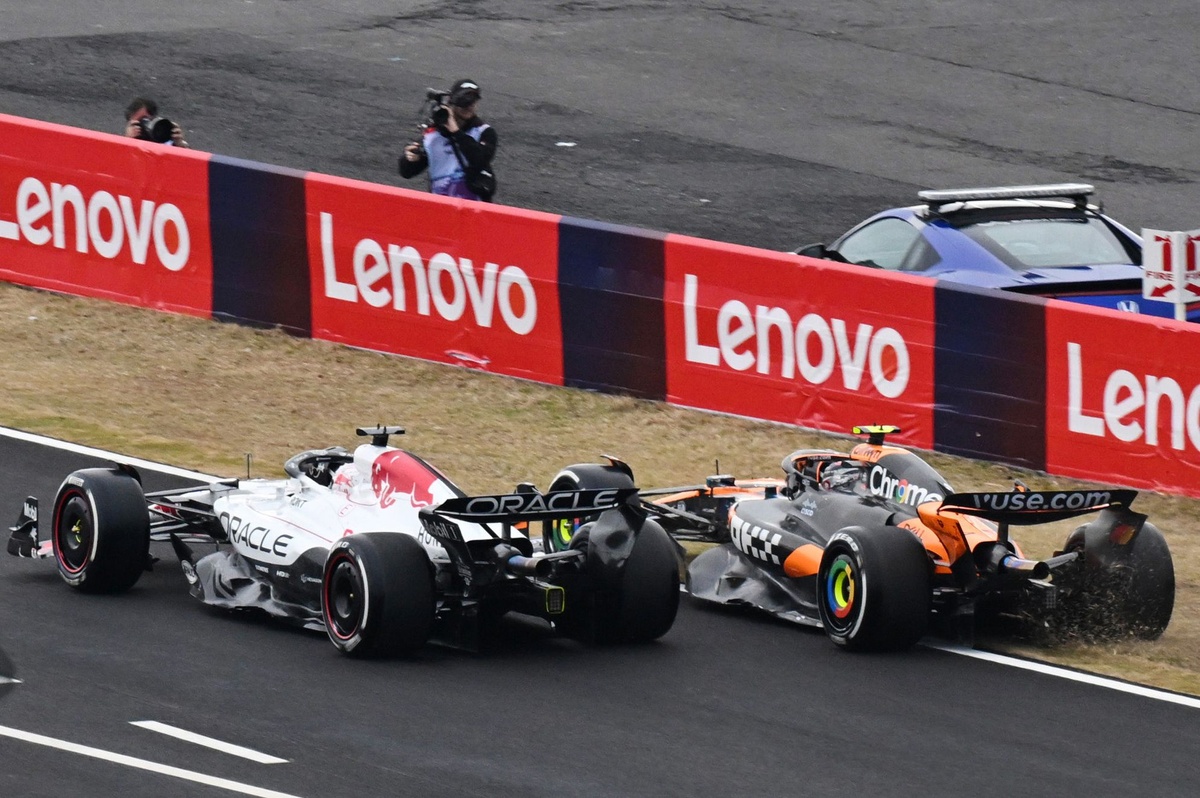
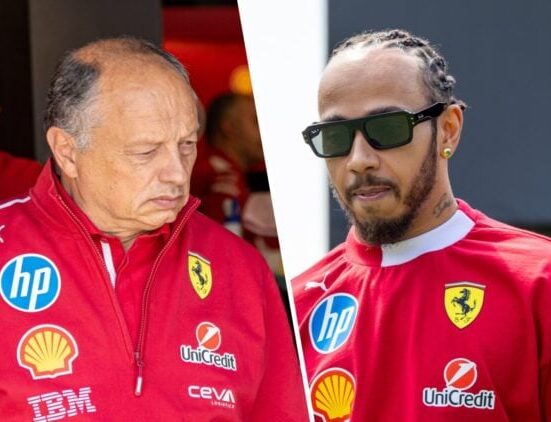
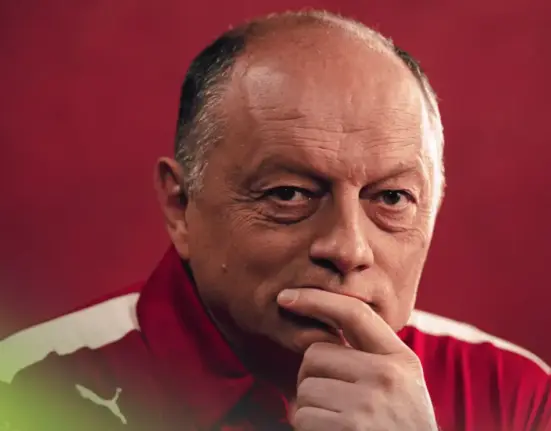

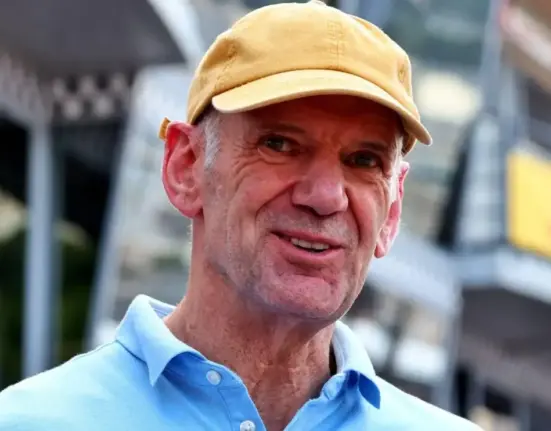
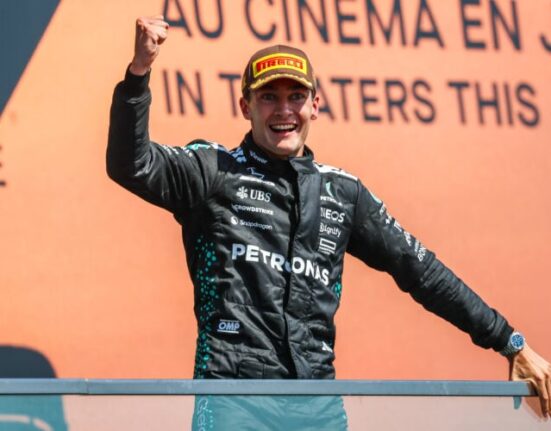

Leave feedback about this